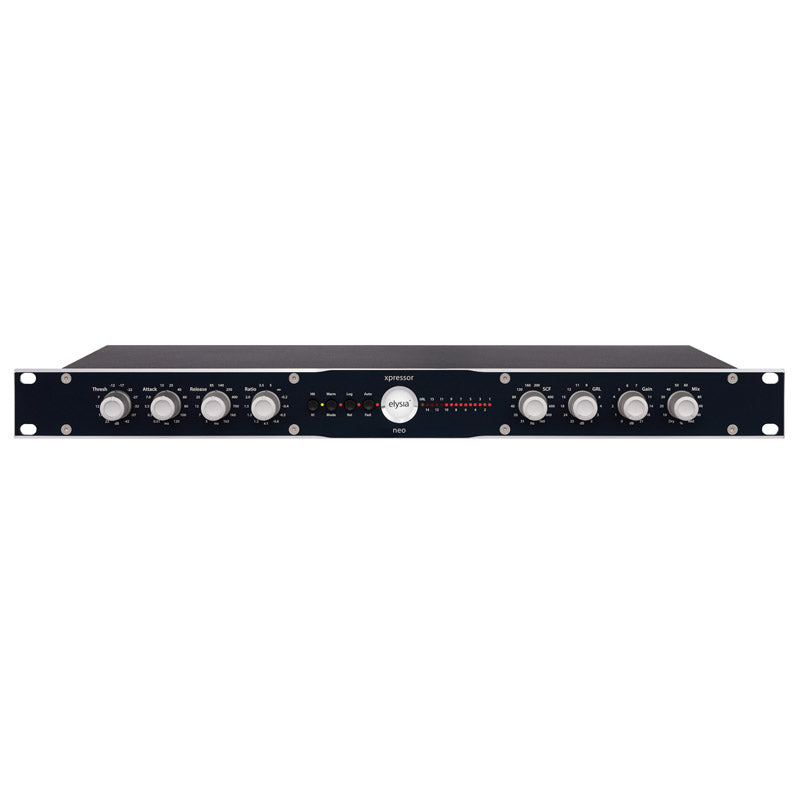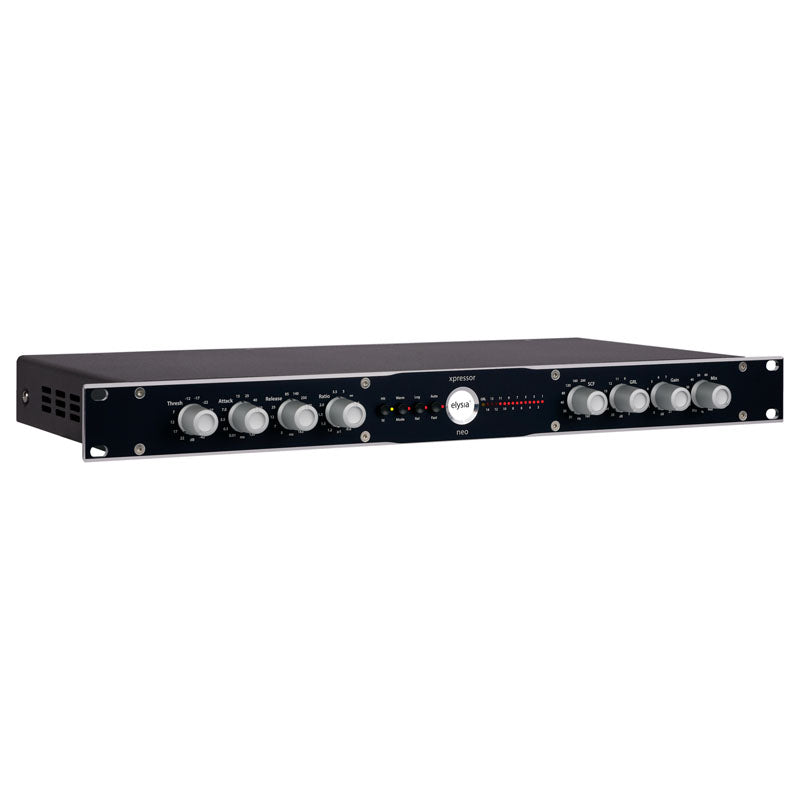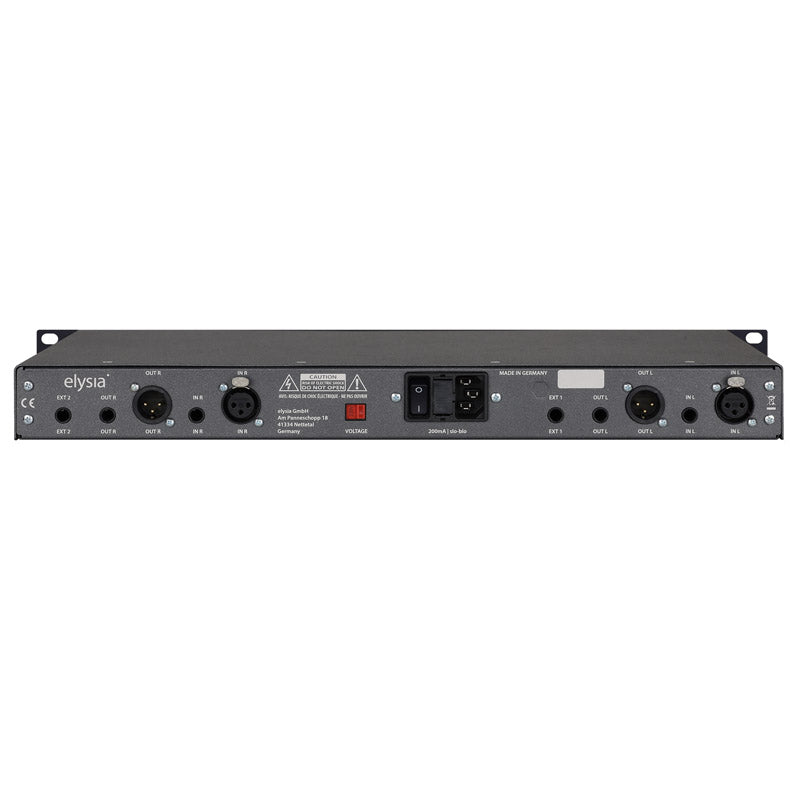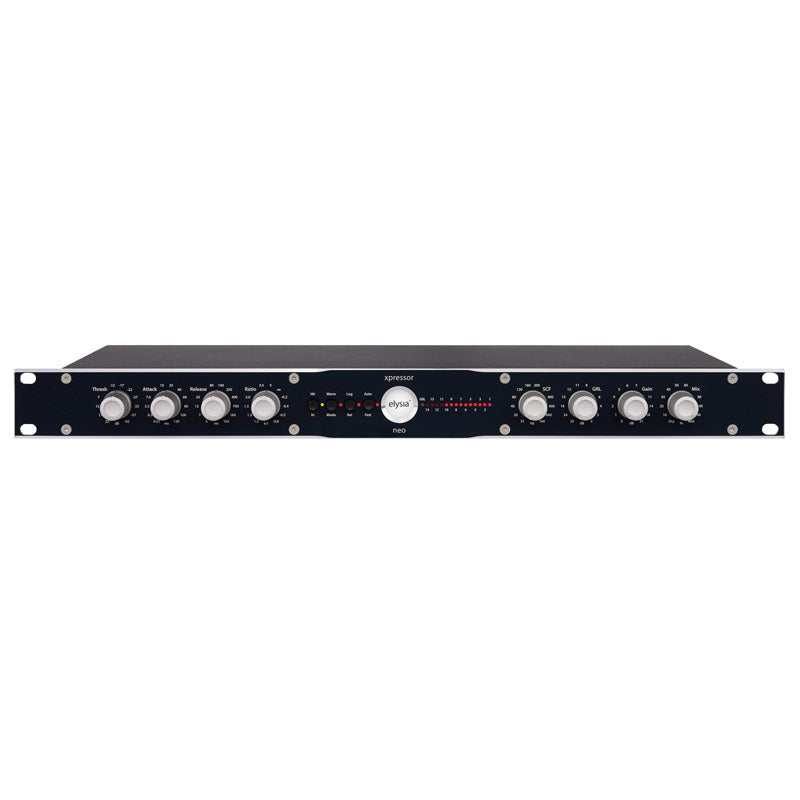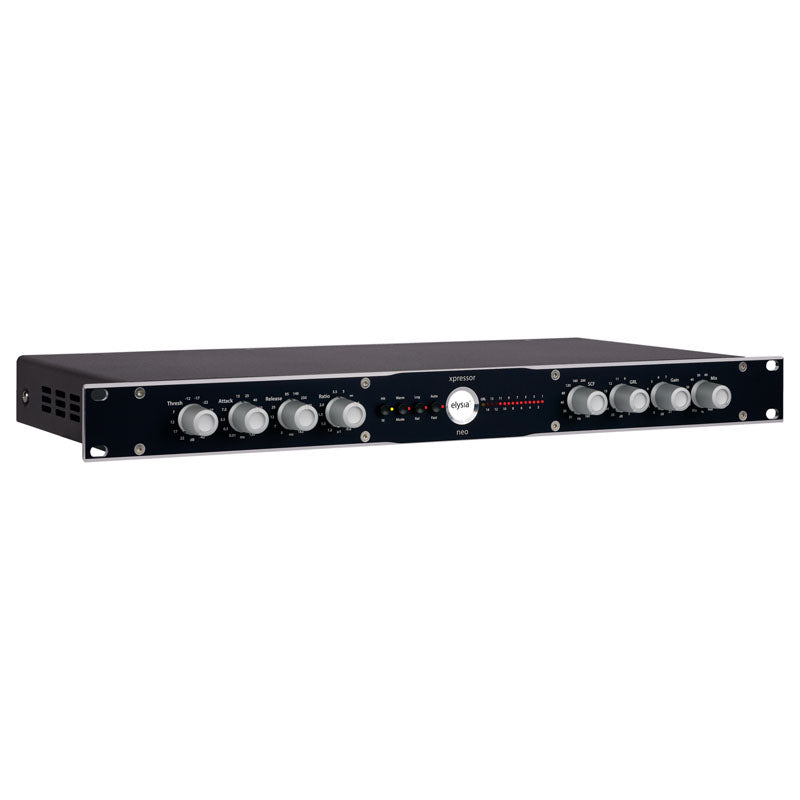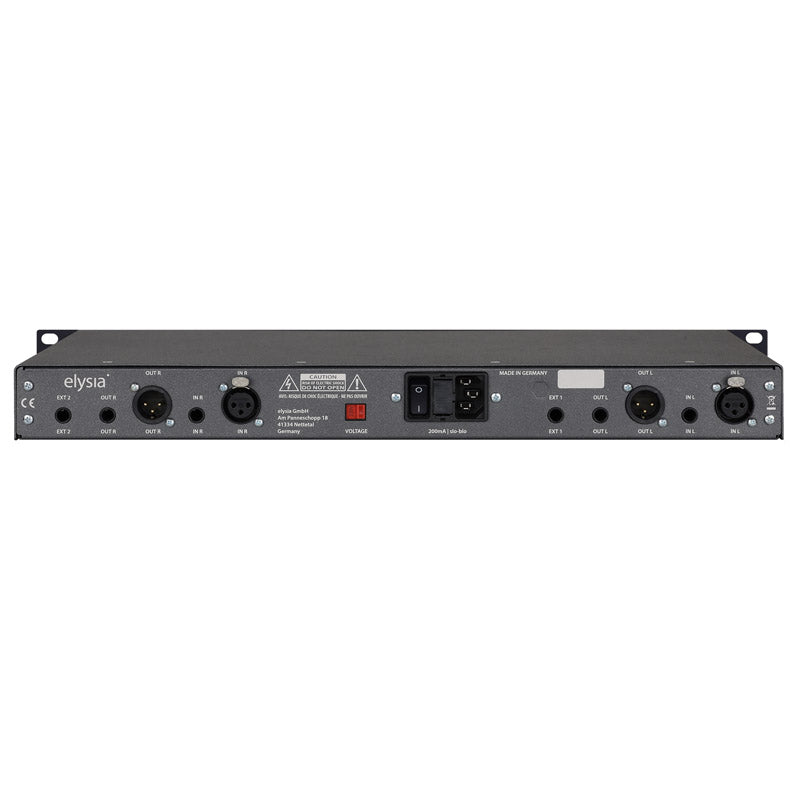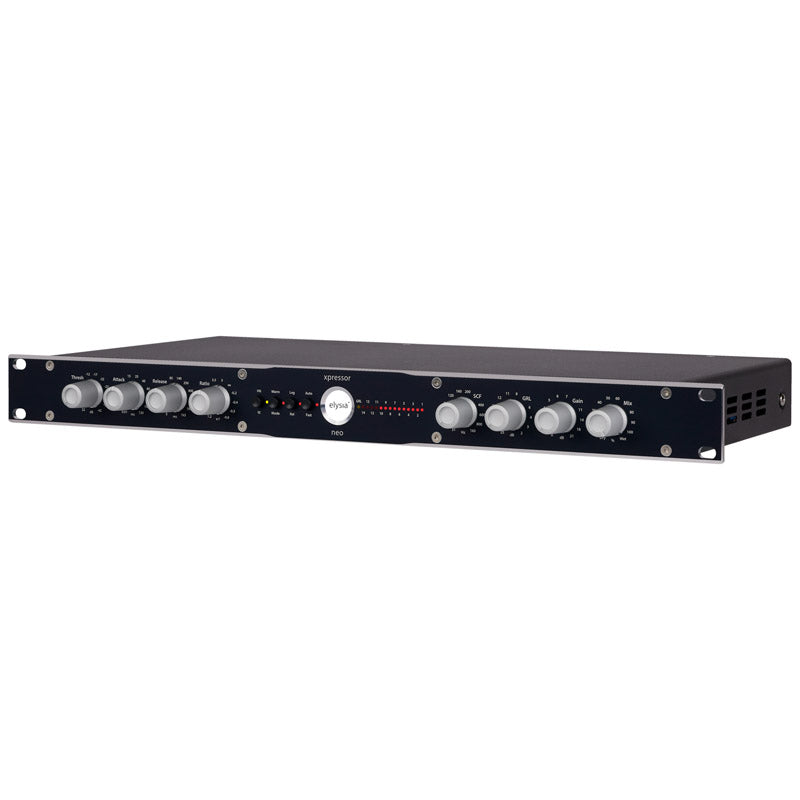Description
elysia xpressor | neo Stereo Compressor (Rackmount)
OVERVIEW
- Class-A Stereo VCA compressor for recoding, mixing and mastering
- Clear and open sound with punchy and fast transients
- Powerful low-end-energy
- Logarithmic and linear release curves
- Warm Mode for a second sound flavor
- Detailed high-end reproduction
- Smooth control response due to RMS detector and soft knee curve
- Wide and deep three-dimensional stereo field
- External Sidechain Out-/Inputs (only 19″ Rack Version)
Auto Fast. The attack parameter is a very crucial factor for the operations of a compressor. Choosing the right time settings is very important, but depending on the dynamic progress of the source material this can be a difficult task – no matter if single tracks or complete mixes are processed. If a very short attack time is chosen, the compressor is able to catch the short peaks, but on the other hand the sustaining signal will also be processed, which might result in audible distortion. Longer settings reduce distortion significantly, but then the compressor is too slow for catching fast impulses. Then the attack time directly and automatically returns to its original setting. In Auto Fast mode the compressor can be very fast, but only when it is really needed. This function influences the attack parameter on short and loud impulses only; in all other cases the original setting of the controller has priority.
Log Release. Time constants and especially the release parameter decide if the processing of a compressor is obvious or unobtrusive to the ear. As it is difficult to achieve perfect results for all kinds of different material with only one type of release curve, xpressor|neo offers two different options: logarithmic and linear. It is characteristic of a logarithmic release that the time constant shortens when the amount of gain reduction increases. The advantage of this behavior is that short and loud peaks (e.g. drums) have a fast release time, while the remaining material is processed with a slower release. Its smooth performance makes the Log Release especially useful for mastering and stereo buss compression. The linear mode, however, has a straight release profile, without the slower tapering release characteristic of the Log mode. The linear mode is a good choice for more aggressive dynamics control of dry signals, and it is especially useful when you want to process signals which do not have a long decay period.
Warm Mode. This function is basically a slew rate limiter that reduces the speed of the output amplifier stages. It affects frequency spectrum, harmonics and transient response. Fast transients are slowed down a bit and the overall sound appears more round and merged. As this function influences the behavior of the output stages, the effect it creates has an impact on the complete processing results of all compression stages. Choose between two different sound characters: the powerful transparency of the discrete class-A circuitry and the saturated richness of the Warm mode.
Sidechain Filter. A low cut filter with a selectable frequency which is located in the sidechain. This means that it will not affect the audio signal itself, but the way in which it will be compressed. The keyword is ‘frequency selective compression’. It reduces the influence low frequencies have on overall compression – an easy way to apply the desired amount of gain reduction without the side effect of the track starting to pump. Especially useful in mastering or when complete mixes are to be compressed, but it can also be a powerful tool for processing subgroups or even single signals.
Gain Reduction Limiter. This limiter is not placed in the audio path where you would usually find it, but in the control path of the compressor. It limits the control voltage according to the setting of the GR Limit controller. No matter how high the input level might get – the amount of gain reduction will never exceed the value which you have set. Loud parts can keep their dynamics, as they will not be compressed beyond the limit of the Gain Reduction Limiter. Special effects like ducking or upward compression can be achieved by only reducing quieter parts without changing the original dynamics.
Parallel Compression. Parallel compression is a technique for mixing a dry signal with a compressed identical signal. It maintains the subtleties of a performance while stabilizing the dynamics. The mix controller makes it possible to cross-fade between the unprocessed and the compressed signals. This allows parallel compression right in the box and makes additional routings redundant in favor of a better signal quality. You can use extreme compression settings without killing a track. By mixing just a part of the compressed signal to the original, the major portion of the initial dynamic structure remains intact.
SPECIFICATIONS
Frequency response: <10 Hz – 400 kHz (-3,0 dB)
THD+N @ 0 dBu, 20 Hz – 22 kHz: Mix 0 %: 0,003 %
THD+N @ 0 dBu, 20 Hz – 22 kHz: Mix 100 %: 0,007 %
THD+N @ +10 dBu, 20 Hz – 22 kHz: Mix 0 %: 0,003 %
THD+N @ +10 dBu, 20 Hz – 22 kHz: Mix 100 %: 0,02 %
Noise floor, 20 Hz – 22 kHz (A-weighted): -91 dB
Dynamic range, 20 Hz – 22 kHz: 112 dB
Level: Input: +21 dBu
Level: Output: +21 dBu
Impedance: Input: 10 kOhm
Impedance: Output: 68 Ohm
Dimensions (W x H x D, incl. Knobs): 19” x 1,75“ x 9,4“
Weight: 3,88 lbs / 1,76 kg
Power consumption: 9 Watts
Potentiometers: 41 Steps
